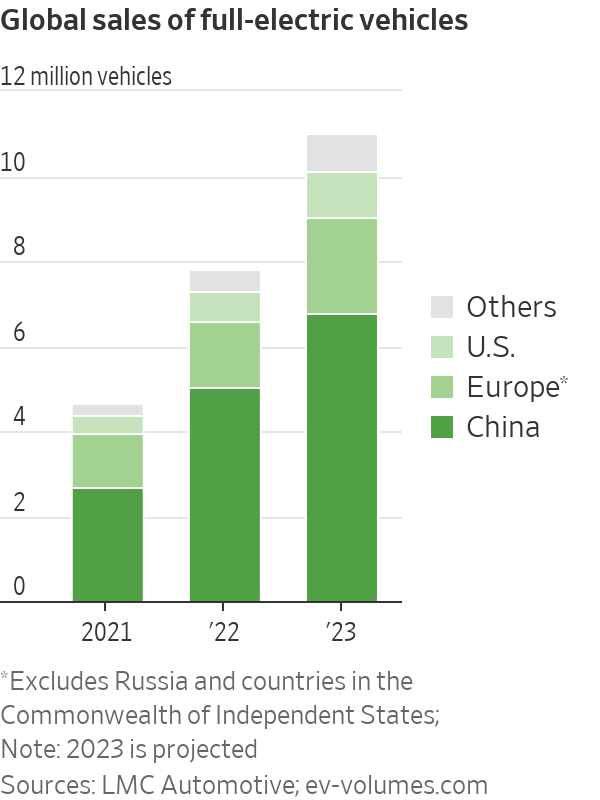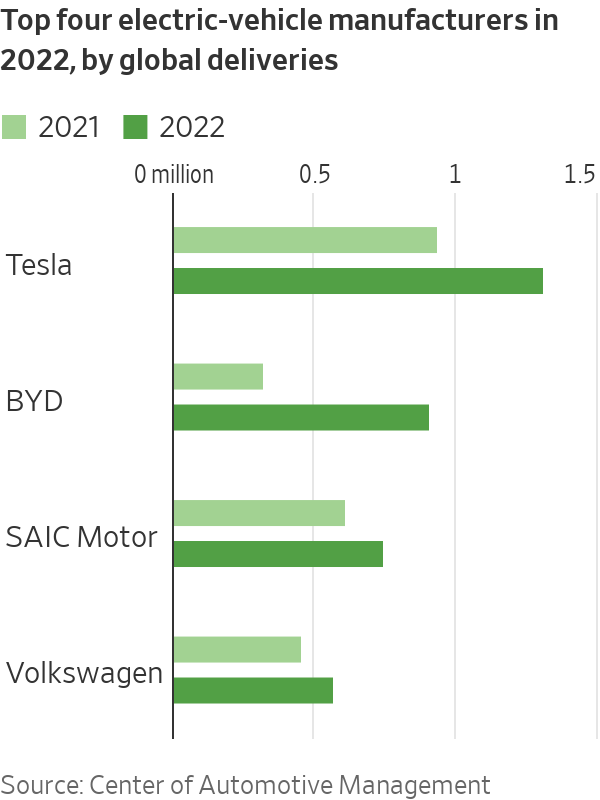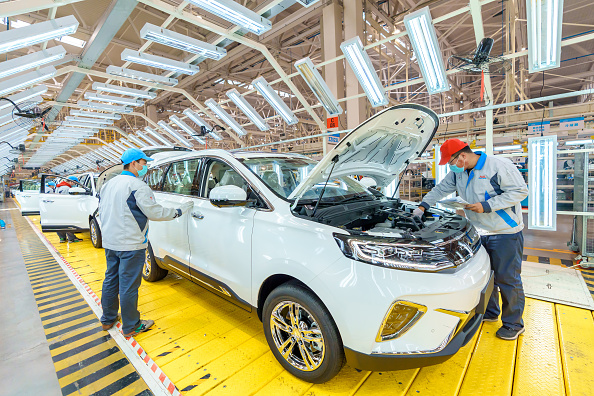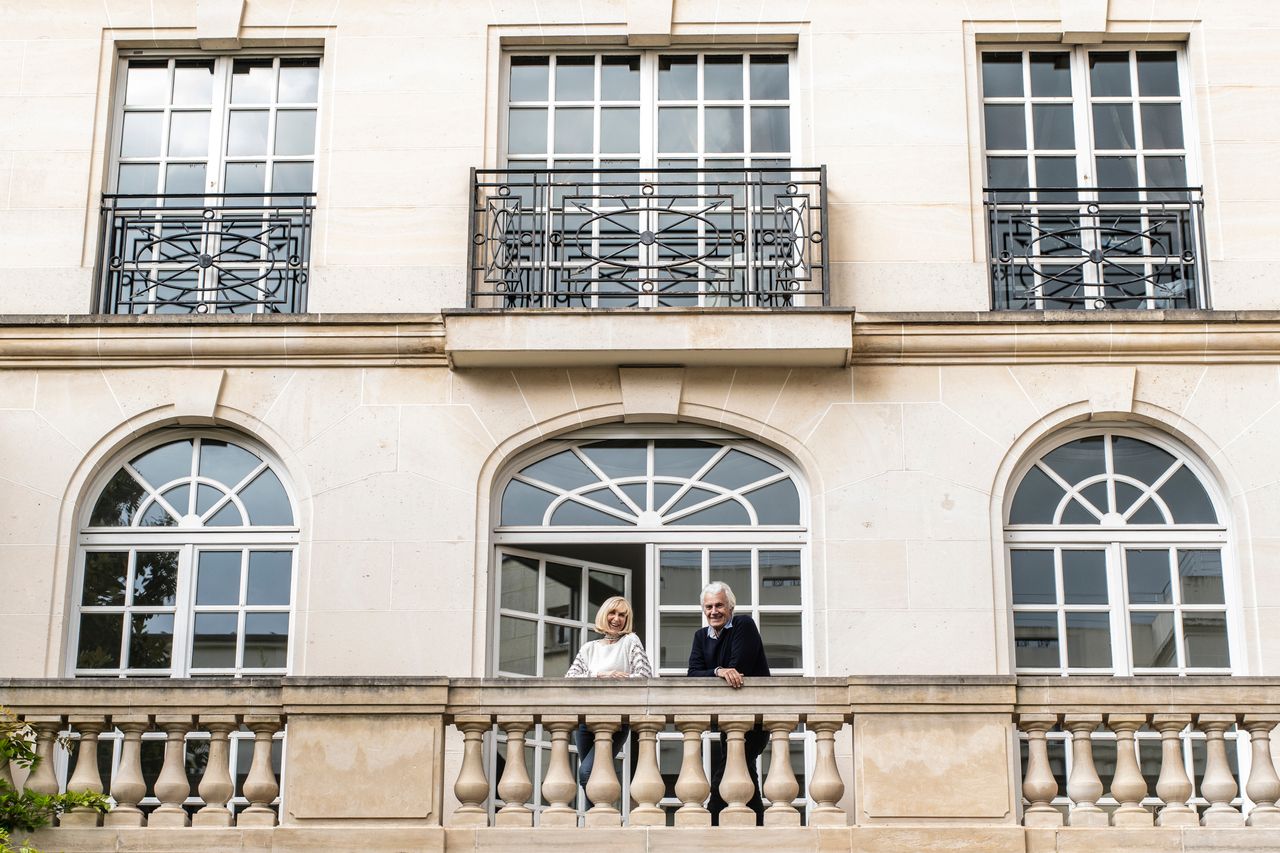EVs Made Up 10% of All New Cars Sold Last Year
China, Europe drive electric-vehicle expansion as U.S. gains traction
BERLIN—Electric-vehicle sales crossed a key milestone last year, achieving around 10% market share for the first time, driven mainly by strong growth in China and Europe, according to fresh data and estimates.
While EVs still make up a fraction of car sales in the U.S., their share of the total market is becoming substantial in Europe and China, and they are increasingly influencing the fortunes of the car market there as the technology goes mainstream. The surge in EV sales also contrasted with the broader car market that suffered from economic worries, inflation and production disruptions.

Global sales of fully electric vehicles totalled around 7.8 million units, an increase of as much as 68% from the previous year, according to preliminary research from LMC Automotive and EV-Volumes.com, research groups that track automotive sales.
Ralf Brandstätter, the head of Volkswagen AG’s China business, told reporters on Friday that electric vehicles would continue expanding fast and that China could soon reach a point where sales of conventional vehicles begin to permanently decline as plug-in vehicles take bigger market share.
“Last year, every fourth vehicle we sold in China was a plug-in, and this year it will be every third auto,” Mr. Brandstätter said. “We haven’t reached the tipping point yet, but we’re expecting to get there between 2025 and 2030.”
For the full year, fully electric vehicles accounted for 11% of total car sales in Europe and 19% in China, according to LMC Automotive. Combined with plug-in hybrid vehicles, which can be plugged in to recharge the battery but also have a small combustion engine, the share of electric vehicles sold in Europe rose to 20.3% of the total last year, according to EV-Volumes.com.
The U.S. lags behind China and Europe in the rollout of EVs, but last year auto makers sold 807,180 fully electric vehicles in the U.S., a rise in the share of all-electric vehicles to 5.8% of all vehicles sold from 3.2% the year before. Tesla is still the world’s dominant EV maker, but conventional auto makers are shortening its lead with new electric-model launches.
In Germany, the largest auto market in Europe, electric vehicles accounted for 25% of new vehicle production last year, according to VDA, the German automotive manufacturers association. In December, there were more EVs sold in the country than conventional cars.
New-car sales overall fell around 1% to 80.6 million vehicles, according to the LMC data, with nearly 4% growth in China helping to offset a decline of 8% in the U.S. and 7% in Europe, which was hit by the weakening global economy, soaring energy costs, supply-chain disruptions and the war in Ukraine.
Bayerische Motoren Werke AG, the German luxury-car maker, was one of many manufacturers last year to see sales of plug-in models rise even as overall sales tumbled. BMW reported a 5% decline in total new-car sales but saw EV sales more than double last year.
“We are confident that we can repeat this success next year, because we have a continued high order backlog for fully electric models,” BMW sales chief Pieter Nota, said this month, commenting on the growth in sales of electric models.
VW, Europe’s biggest manufacturer by sales, said on Thursday that overall new-car sales fell 7% to 8.3 million vehicles last year, but sales of electric vehicles rose 26% to 572,100 units. The sales figures encompass the company’s large stable of brands, including VW, sports-car maker Porsche, luxury-car brand Audi and passenger-car brands Skoda and Seat.
The bulk of VW’s sales of EVs were in Europe, but sales growth was strongest in China and the U.S., the company said.
Other manufacturers reported a similar divide of strong growth in sales of electric cars—boosted in part by the availability of a wider array of models in addition to market leader Tesla Inc.—and weak or declining sales of conventional vehicles. Ford Motor Co., Mercedes-Benz Group AG and BMW each said their EV sales more than doubled in 2022, while their total vehicle sales declined.
Photos: The EV Rivals Aiming for Tesla’s Crown in China
European auto makers have focused their EV production and sales on home markets as they try to meet European Union emissions regulations. They also began last year to more aggressively expand their EV business in other major markets, especially China and the U.S.
In China, which accounted for around two-thirds of global sales of fully electric cars last year, domestic manufacturers are gaining ground on traditional Western auto makers and are also beginning to expand into Europe and the U.S.
Worldwide, Tesla maintained the top spot in a global ranking of manufacturers by sales of all-electric vehicles, followed by Chinese manufacturers BYD Co. and SAIC Motor Corp., and brands belonging to the VW group, according to a study published by Stefan Bratzel, director of the Center of Automotive Management, an automotive-research group in Germany.

In the U.S., Ford is the second-largest maker of EVs by sales, followed by Hyundai Motor Co. and its affiliate Kia Corp. Meanwhile, General Motors Co., VW and Nissan Motor Co. lost EV market share in the U.S. last year.
While EVs are showing signs of becoming more mainstream globally, analysts warn that repeating last year’s strong EV performance in 2023 could be difficult as economic worries weigh on consumers, and cash rebates on EVs are reduced or scrapped completely in some countries. Rising electricity prices in Europe in the wake of Russia’s attack on Ukraine have also diminished the appeal of EVs compared with gas-powered cars.
Germany witnessed a surge in last-minute EV purchases in December, as consumers rushed to take advantage of government incentives before they were cut this year. Since Jan. 1, government subsidies for the purchase of an EV with a listing price of up to 40,000 euros, equivalent to about $43,000, fell to 4,500 euros from 6,000 euros previously.
For the past couple of years, auto makers, especially in Europe, have struggled to find key components such as computer chips to maintain production in pace with demand. This mismatch between demand and supply is one reason auto makers posted lofty profits last year despite broadly weaker sales.
As the economy weakens, supply-chain problems ease and subsidies dry up, manufacturers could find it harder to maintain the high prices for new cars as they chase potentially fewer buying customers. This could result in a downward price spiral that potentially hits profits.
“Demand is likely to weaken in the coming year,” said Peter Fuss, an auto analyst with Ernst & Young. “The weak economy will cause retail and business consumers to be more reluctant. And it is possible that supply will outpace demand and we will begin to see discounts again.”
 Copyright 2020, Dow Jones & Company, Inc. All Rights Reserved Worldwide. LEARN MORE
Copyright 2020, Dow Jones & Company, Inc. All Rights Reserved Worldwide. LEARN MORE
This stylish family home combines a classic palette and finishes with a flexible floorplan
Just 55 minutes from Sydney, make this your creative getaway located in the majestic Hawkesbury region.
As Paris makes its final preparations for the Olympic games, its residents are busy with their own—packing their suitcases, confirming their reservations, and getting out of town.
Worried about the hordes of crowds and overall chaos the Olympics could bring, Parisians are fleeing the city in droves and inundating resort cities around the country. Hotels and holiday rentals in some of France’s most popular vacation destinations—from the French Riviera in the south to the beaches of Normandy in the north—say they are expecting massive crowds this year in advance of the Olympics. The games will run from July 26-Aug. 1.
“It’s already a major holiday season for us, and beyond that, we have the Olympics,” says Stéphane Personeni, general manager of the Lily of the Valley hotel in Saint Tropez. “People began booking early this year.”
Personeni’s hotel typically has no issues filling its rooms each summer—by May of each year, the luxury hotel typically finds itself completely booked out for the months of July and August. But this year, the 53-room hotel began filling up for summer reservations in February.
“We told our regular guests that everything—hotels, apartments, villas—are going to be hard to find this summer,” Personeni says. His neighbours around Saint Tropez say they’re similarly booked up.
As of March, the online marketplace Gens de Confiance (“Trusted People”), saw a 50% increase in reservations from Parisians seeking vacation rentals outside the capital during the Olympics.
Already, August is a popular vacation time for the French. With a minimum of five weeks of vacation mandated by law, many decide to take the entire month off, renting out villas in beachside destinations for longer periods.
But beyond the typical August travel, the Olympics are having a real impact, says Bertille Marchal, a spokesperson for Gens de Confiance.
“We’ve seen nearly three times more reservations for the dates of the Olympics than the following two weeks,” Marchal says. “The increase is definitely linked to the Olympic Games.”

Getty Images
According to the site, the most sought-out vacation destinations are Morbihan and Loire-Atlantique, a seaside region in the northwest; le Var, a coastal area within the southeast of France along the Côte d’Azur; and the island of Corsica in the Mediterranean.
Meanwhile, the Olympics haven’t necessarily been a boon to foreign tourism in the country. Many tourists who might have otherwise come to France are avoiding it this year in favour of other European capitals. In Paris, demand for stays at high-end hotels has collapsed, with bookings down 50% in July compared to last year, according to UMIH Prestige, which represents hotels charging at least €800 ($865) a night for rooms.
Earlier this year, high-end restaurants and concierges said the Olympics might even be an opportunity to score a hard-get-seat at the city’s fine dining.
In the Occitanie region in southwest France, the overall number of reservations this summer hasn’t changed much from last year, says Vincent Gare, president of the regional tourism committee there.
“But looking further at the numbers, we do see an increase in the clientele coming from the Paris region,” Gare told Le Figaro, noting that the increase in reservations has fallen directly on the dates of the Olympic games.
Michel Barré, a retiree living in Paris’s Le Marais neighbourhood, is one of those opting for the beach rather than the opening ceremony. In January, he booked a stay in Normandy for two weeks.
“Even though it’s a major European capital, Paris is still a small city—it’s a massive effort to host all of these events,” Barré says. “The Olympics are going to be a mess.”
More than anything, he just wants some calm after an event-filled summer in Paris, which just before the Olympics experienced the drama of a snap election called by Macron.
“It’s been a hectic summer here,” he says.

AFP via Getty Images
Parisians—Barré included—feel that the city, by over-catering to its tourists, is driving out many residents.
Parts of the Seine—usually one of the most popular summertime hangout spots —have been closed off for weeks as the city installs bleachers and Olympics signage. In certain neighbourhoods, residents will need to scan a QR code with police to access their own apartments. And from the Olympics to Sept. 8, Paris is nearly doubling the price of transit tickets from €2.15 to €4 per ride.
The city’s clear willingness to capitalise on its tourists has motivated some residents to do the same. In March, the number of active Airbnb listings in Paris reached an all-time high as hosts rushed to list their apartments. Listings grew 40% from the same time last year, according to the company.
With their regular clients taking off, Parisian restaurants and merchants are complaining that business is down.
“Are there any Parisians left in Paris?” Alaine Fontaine, president of the restaurant industry association, told the radio station Franceinfo on Sunday. “For the last three weeks, there haven’t been any here.”
Still, for all the talk of those leaving, there are plenty who have decided to stick around.
Jay Swanson, an American expat and YouTuber, can’t imagine leaving during the Olympics—he secured his tickets to see ping pong and volleyball last year. He’s also less concerned about the crowds and road closures than others, having just put together a series of videos explaining how to navigate Paris during the games.
“It’s been 100 years since the Games came to Paris; when else will we get a chance to host the world like this?” Swanson says. “So many Parisians are leaving and tourism is down, so not only will it be quiet but the only people left will be here for a party.”
This stylish family home combines a classic palette and finishes with a flexible floorplan
Just 55 minutes from Sydney, make this your creative getaway located in the majestic Hawkesbury region.






















